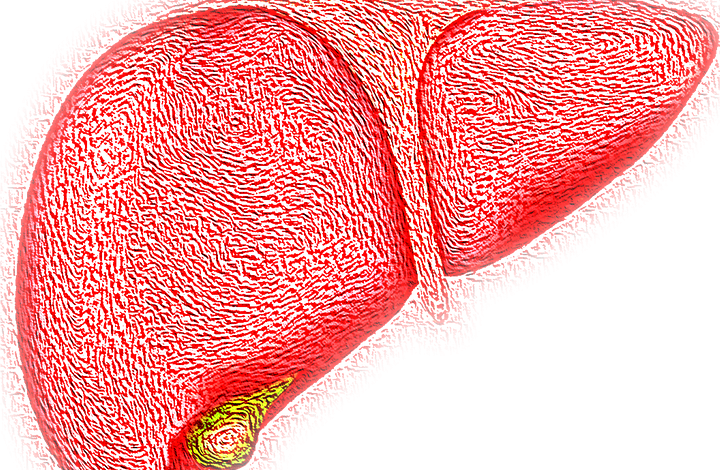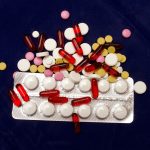Drugs That Can Cause Cholestasis

Cholestasis is a medical condition characterized by a reduction or cessation of bile flow from the liver to the small intestine. Bile is a digestive fluid that helps in the absorption of fats and fat-soluble vitamins. Cholestasis can occur due to various reasons, such as liver disease, gallstones, and certain medications. When the bile flow is blocked, the bile acids build up in the liver and bloodstream, leading to symptoms such as itching, jaundice (yellowing of the skin and eyes), and pale stools. In severe cases, cholestasis can cause complications such as malnutrition, liver failure, and increased risk of infections.
Cholestasis is relatively rare, with a prevalence of about 1 in 1,000 pregnancies in the United States. It is more common in women carrying multiples, women with a history of liver disease, and women who have previously had cholestasis during pregnancy.
List of Drugs That Can Cause Cholestasis
There are several drugs that have been reported to cause cholestasis, which is a condition where the flow of bile from the liver is reduced or blocked. Some of the drugs that can cause cholestasis include:
1. Anabolic steroids: Anabolic steroids can cause cholestasis by disrupting the normal flow of bile from the liver into the intestine. The liver produces bile, which is stored in the gallbladder and released into the small intestine to aid in the digestion of fats. Anabolic steroids can interfere with the secretion of bile into the bile ducts, leading to the accumulation of bile in the liver. This can cause inflammation and damage to the liver cells, which can result in the obstruction of the bile ducts and lead to cholestasis. Anabolic steroids can also cause liver tumors, which can compress the bile ducts and cause cholestasis. Cholestasis caused by anabolic steroids can be reversible if the drug is discontinued early, but in some cases, it can progress to liver failure and require a liver transplant.
There have been several case reports of anabolic steroid use leading to cholestasis. One case report published in the Journal of Medical Case Reports in 2011 described a 20-year-old man who developed severe cholestasis after using anabolic steroids for bodybuilding purposes. Another case report published in the Journal of Clinical Gastroenterology in 2006 described a 24-year-old male bodybuilder who developed cholestasis and liver failure after using anabolic steroids. In both cases, the individuals recovered after discontinuing the use of anabolic steroids and receiving medical treatment.
2. Antibiotics: Antibiotics are drugs used to treat bacterial infections. Some antibiotics can cause cholestasis, which is characterized by a reduction in bile flow from the liver. This occurs because some antibiotics can cause inflammation in the liver, leading to blockage of the bile ducts or damage to the liver cells that produce bile.
One example of an antibiotic that can cause cholestasis is erythromycin. Erythromycin is a macrolide antibiotic that is commonly used to treat infections such as pneumonia, bronchitis, and ear infections. It has been associated with cases of cholestatic hepatitis, which is a type of liver inflammation that causes reduced bile flow.
Another example of an antibiotic that can cause cholestasis is trimethoprim-sulfamethoxazole (TMP-SMX). This combination antibiotic is used to treat a variety of bacterial infections, including urinary tract infections and ear infections. It has been associated with cases of cholestatic hepatitis and other forms of liver damage. Other examples of antibiotics that can cause cholestasis include tetracycline and amoxicillin-clavulanate.
3. Antifungal medications: Antifungal medications can cause cholestasis by disrupting the normal function of the liver cells. One of the mechanisms by which antifungal drugs cause cholestasis is by inhibiting the transporters that are responsible for moving bile from the liver to the small intestine. This can result in a buildup of bile in the liver, leading to damage to the liver cells and the bile ducts. The bile can also back up into the bloodstream, leading to jaundice and other symptoms associated with cholestasis. The severity of the cholestasis can depend on the specific antifungal medication used, the duration of treatment, and the patient’s individual risk factors. Examples of antifungal medications that can cause cholestasis include ketoconazole, terbinafine, and amphotericin B.
4. Chlorpromazine: Chlorpromazine is a medication that belongs to the class of phenothiazine antipsychotics. It has been reported to cause cholestasis, which is a type of liver injury. Chlorpromazine-induced cholestasis occurs due to the drug’s ability to block the flow of bile from the liver into the intestine, resulting in the buildup of bile acids in the liver. The accumulation of bile acids can cause liver cell injury and lead to cholestasis.
Chlorpromazine-induced cholestasis is a rare but potentially serious side effect of the medication. Symptoms of cholestasis can include jaundice, itching, and abdominal pain. If left untreated, it can progress to liver failure.
5. Hormonal contraceptives: Hormonal contraceptives, such as birth control pills, contain estrogen and progesterone, which can affect the liver’s ability to process bile. This can lead to the accumulation of bile acids in the liver, causing cholestasis. However, it should be noted that the risk of developing cholestasis due to hormonal contraceptives is low and usually occurs in individuals who have an underlying liver condition. Additionally, cholestasis caused by hormonal contraceptives typically resolves once the medication is stopped.
6. Nonsteroidal anti-inflammatory drugs (NSAIDs): Nonsteroidal anti-inflammatory drugs (NSAIDs) are a group of medications commonly used to relieve pain and inflammation. Although they are generally considered safe, long-term use or high doses of NSAIDs can sometimes cause cholestasis, a condition in which the flow of bile from the liver to the intestine is impaired. This can lead to the buildup of bile acids and other substances in the liver, which can cause liver damage.
The exact mechanism by which NSAIDs cause cholestasis is not fully understood, but it is believed to be related to their effects on the liver cells and the bile ducts. NSAIDs can cause liver cells to produce less bile and alter the composition of the bile that is produced, making it thicker and more likely to block the bile ducts. They can also cause inflammation in the bile ducts, which can further obstruct the flow of bile.
Some examples of NSAIDs that have been associated with cholestasis include diclofenac, ibuprofen, naproxen, and aspirin.
7. Proton pump inhibitors: Proton pump inhibitors (PPIs) are a class of medications commonly used to treat gastroesophageal reflux disease (GERD), peptic ulcers, and other acid-related disorders. Although PPIs are generally considered safe and effective, they have been associated with rare cases of cholestasis.
The exact mechanism by which PPIs can cause cholestasis is not fully understood. However, it is believed that PPIs may interfere with the transport of bile acids from the liver to the small intestine, leading to a buildup of bile in the liver and a reduction in bile flow. This can cause liver damage and lead to cholestasis.
Some studies suggest that certain types of PPIs, such as omeprazole and esomeprazole, may be more likely to cause cholestasis than others. However, more research is needed to fully understand the link between PPIs and cholestasis.
8. Statins: Statins are a class of medications used to lower cholesterol levels in the blood. Although rare, statins have been associated with cases of cholestasis, a condition in which the flow of bile from the liver to the small intestine is impaired. The exact mechanism by which statins cause cholestasis is not fully understood, but it is thought to be related to the way in which the medication is metabolized in the liver.
One theory is that statins can interfere with the transport of bile acids, which are necessary for the digestion and absorption of fats. This can lead to the accumulation of bile acids in the liver, causing inflammation and injury to liver cells. Additionally, some studies suggest that statins can alter the expression of genes involved in bile acid synthesis and transport, which can also contribute to cholestasis.
It is important to note that cholestasis is a rare side effect of statins and usually resolves once the medication is discontinued. However, anyone taking statins who experiences symptoms such as jaundice (yellowing of the skin and eyes), dark urine, or pale stools should seek medical attention right away, as these may be signs of liver damage.
It’s important to note that not everyone who takes these medications will develop cholestasis, and the severity of the condition can vary widely. It’s also possible for cholestasis to occur as a result of factors other than medication use, such as pregnancy or certain liver diseases. If you are experiencing symptoms of cholestasis, it’s important to talk to your healthcare provider about any medications you are taking and any other potential risk factors.
How To Cope With Drug-Induced Cholestasis
The management of drug-induced cholestasis depends on the severity and underlying cause of the condition. In general, treatment involves discontinuing the offending medication and managing the symptoms of cholestasis. Here are some ways to cope with drug-induced cholestasis:
1. Discontinuation of the medication: If a medication is suspected to be causing cholestasis, it should be discontinued immediately.
2. Medical evaluation: A healthcare provider will conduct an evaluation of the patient to determine the severity and underlying cause of the cholestasis. This may involve blood tests, imaging studies, and other diagnostic tests.
3. Symptomatic management: Treatment may involve the management of symptoms associated with cholestasis, such as pruritus (itching), nausea, and fatigue. This may involve medications such as antihistamines, bile acid sequestrants, and ursodeoxycholic acid.
4. Nutritional support: Patients with cholestasis may experience malabsorption of fat-soluble vitamins, so nutritional support may be necessary. This may involve supplementation with vitamin A, D, E, and K.
5. Monitoring: Patients with drug-induced cholestasis should be closely monitored for improvement in symptoms and liver function tests.
It is important to note that the treatment of drug-induced cholestasis should be under the supervision of a healthcare provider.





